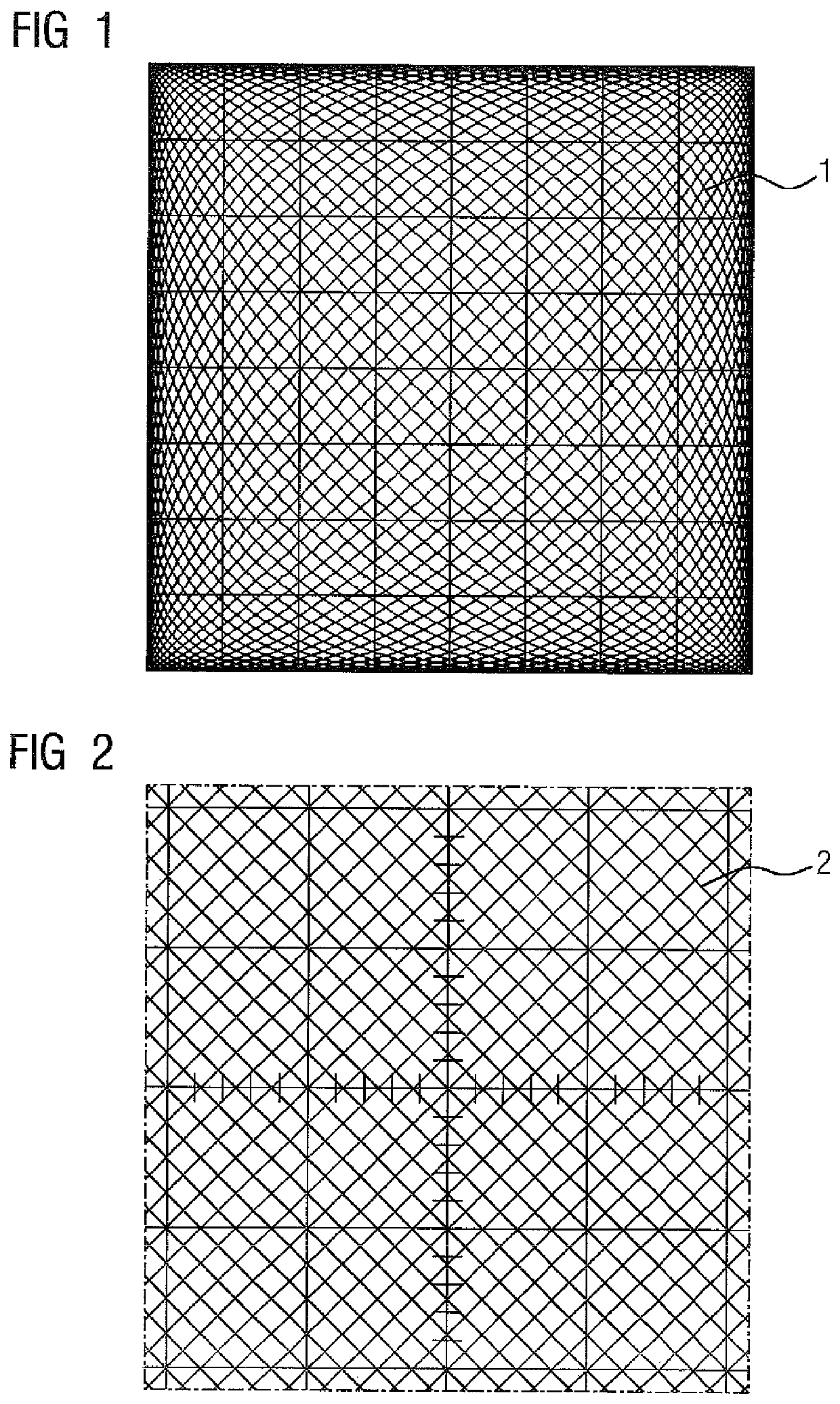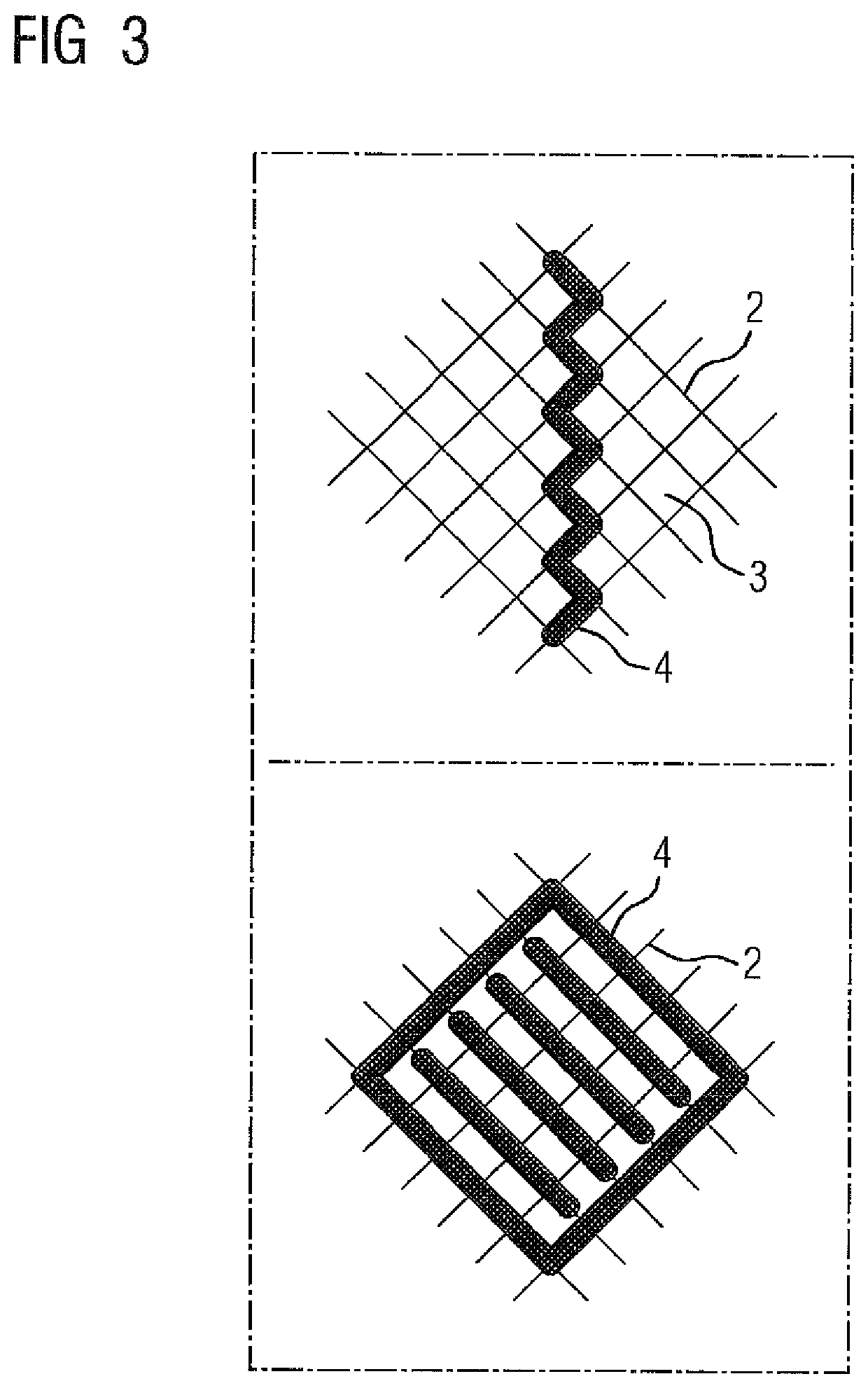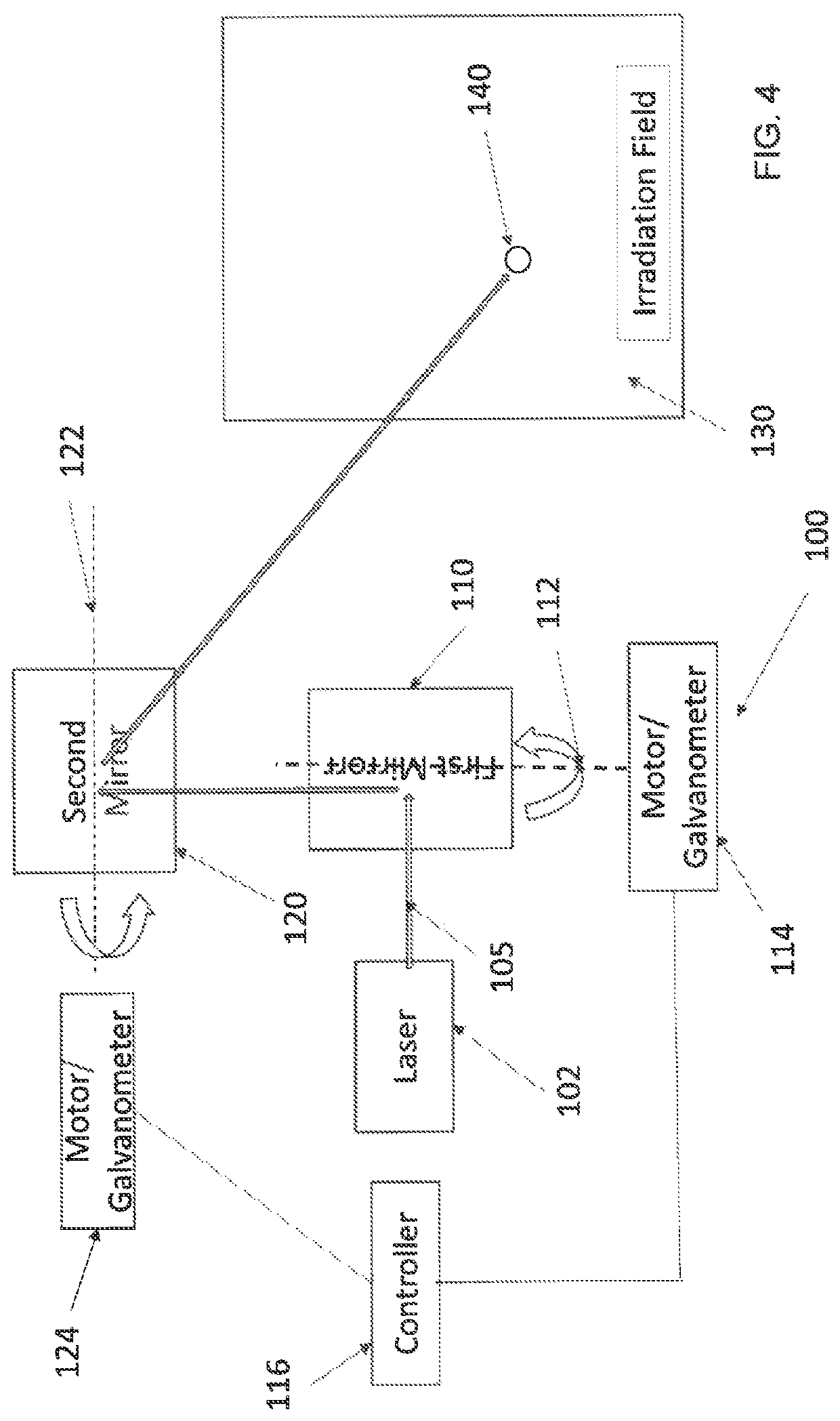Control device and method for controlling the laser beam deflection
a control device and laser beam technology, applied in the direction of optical elements, instruments, manufacturing tools, etc., can solve the problems of inertia and acceleration/deceleration, possible errors, and scanner needs a very fast discontinuous mechanical movement, etc., to achieve high resolution, high complexity, and high accuracy
- Summary
- Abstract
- Description
- Claims
- Application Information
AI Technical Summary
Benefits of technology
Problems solved by technology
Method used
Image
Examples
Embodiment Construction
[0044]Although the invention has been illustrated and described in greater detail by the preferred exemplary embodiment, the invention is not restricted by the disclosed examples. Variations herefrom can be derived by the person skilled in the art, without departing from the scope of protection of the invention, as is defined by the following claims.
[0045]It has been recognized in accordance with the invention that on the one hand the mechanical inertia of the mirrors or of the mirrors by comparison with the shafts is a first problem. On the other hand the problem lies in the fact that the desired pattern / display pattern in the irradiation field is to be specified in or to be divided into single, individual movements / irradiation points. I.e. the desired irradiation points must be projected onto a default pattern to be illuminated.
[0046]In accordance with the invention it has further been recognized that through the continuous movement of the mirrors of the scanner or of a galvanosco...
PUM
| Property | Measurement | Unit |
|---|---|---|
| frequency | aaaaa | aaaaa |
| frequency | aaaaa | aaaaa |
| frequency | aaaaa | aaaaa |
Abstract
Description
Claims
Application Information
 Login to View More
Login to View More - R&D
- Intellectual Property
- Life Sciences
- Materials
- Tech Scout
- Unparalleled Data Quality
- Higher Quality Content
- 60% Fewer Hallucinations
Browse by: Latest US Patents, China's latest patents, Technical Efficacy Thesaurus, Application Domain, Technology Topic, Popular Technical Reports.
© 2025 PatSnap. All rights reserved.Legal|Privacy policy|Modern Slavery Act Transparency Statement|Sitemap|About US| Contact US: help@patsnap.com



